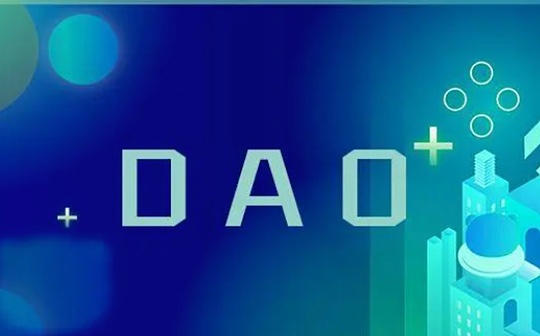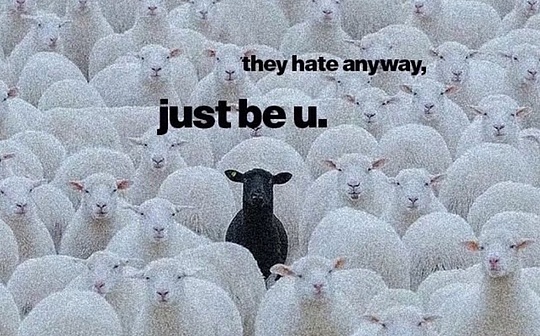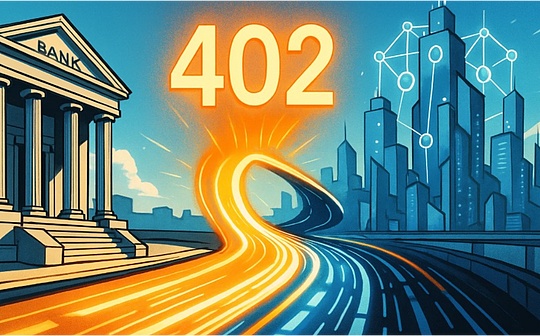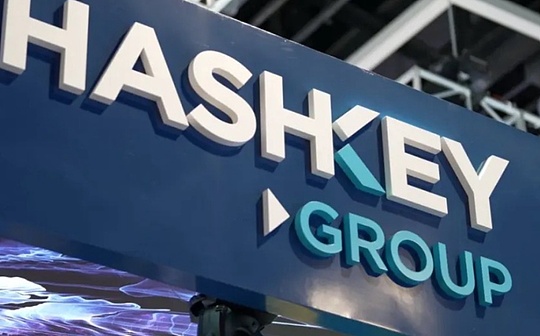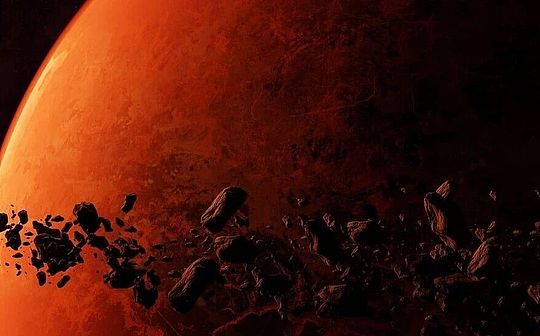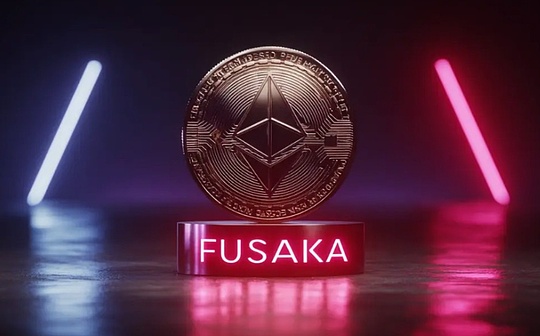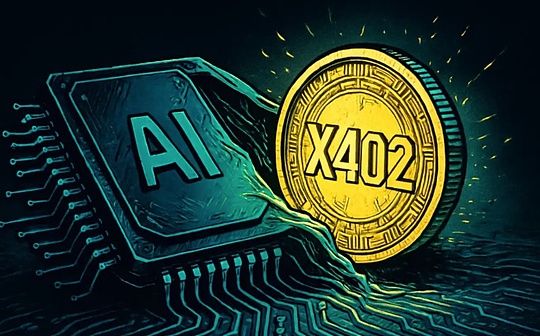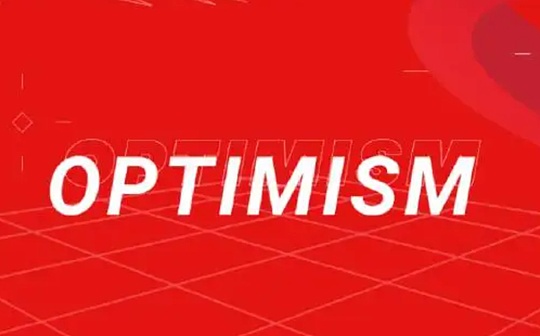
Author: Superchain Eco Source: mirror Translation: Shan Oppa, Bitchain Vision
Preface
Blockchain technology can achieve trust and transparency without central authority, laying the foundation for the new on-chain digital economy.On-chain organizations, especially decentralized autonomous organizations (DAOs), leverage this infrastructure to manage resources and achieve their goals in a point-to-point environment.
DAO has seen significant growth in size, capability and complexity over the past five years.More than 3.3 million addresses have actively participated in DAO’s voting and governance, and the total assets managed by the DAO Treasury are close to US$35 billion (Data source: DeepDAO).
Despite the huge potential of DAO, this new collaboration model still faces many challenges in governance and operations.To reduce complexity, DAOs often start with simple centralized organizations and then gradually develop into more resilient, more decentralized organizations, a process known as “Progressive decentralization”
This report aims to promote the development and adoption of a functional governance framework, thereby enhancing the operational capabilities of DAOs and supporting them to grow and decentralize over time.
This report draws lessons from nearly 40 DAO failure cases from 2016 to 2024 and summarizes negative patterns that affect their viability and effectiveness.In the second half, we will build on these insights to provide executable advice for optimizing governance in Optimism Collective.
Overview of DAO Failure Cases
Our team analyzed 37 DAO failure cases between 2016 and 2024 to identify key failure patterns.Data sources include interviews with stakeholders and desk research.We sorted outDAO Failed DashboardPublicly released, providing a complete data overview.
We divide the current status of DAO into three categories: still operating (active), the operation scale has been reduced (Sleep), and (termination).The current state of the DAO is used as a reference indicator to measure the severity and impact of its failure.
We also document the main categories of each DAO (such as DeFi protocol, L1 blockchain, etc.), the network to which it belongs, the voting tools and organizational structure used, and mark the main and secondary reasons for failure.

The graph shows the main types of failures identified in the current dataset.in,DAO cannot find a market fit for products or servicesIt is considered to be the main cause of failure, more than40%The failure cases fall into this category.About 30% of failures are due to security incidents caused by vulnerabilities or attacks.In contrast, governance is less likely to be associated with operational failures, with voter indifference (8%) and stakeholder disagreement (5%) being the two most common cases in this subcategory.Even if all governance and operation-related failures are combined (19% in total), the probability and degree of impact of the occurrence are still smaller than product failures.
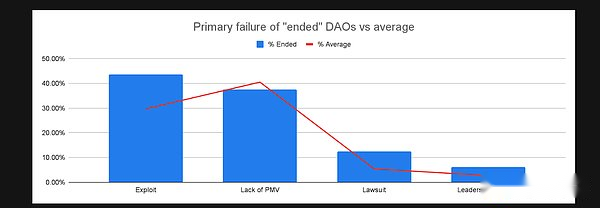
The percentage of the major failure types that will result in DAO termination (blue bar) in visual wayandThe average share of the failure type (red line) of the entire dataset is compared.The gap between the top of the blue column and the top of the red line reflects the severity of the specific failure type in causing the final DAO termination.
Large-scale vulnerabilities caused by hackers or vulnerabilities are another common cause of DAO termination, with nearly 44% of catastrophic DAO failures being caused by exploits.These data further demonstrate that product adaptability and security are the most critical responsibilities of DAO.The existence of liquidity governance tokens may be one of the reasons for exploitation to high failure rates, as hacking attacks often involve protocol native tokens, which puts huge sales pressure on projects.The decline in token prices often seriously affects the operating capital of these DAOs, as most DAOs’ funds are centralized around their native tokens.
Failure to find the product market fit ranks second, with a significant failure of 37.5% related to the failure of DAO to find the market fit.In some cases, DAOs may be created to achieve specific goals at a specific point in time, such as aiming to acquire specific assets or test specific arguments.When such DAOs fail to achieve their primary goals within a reasonable time, there is usually little reason to continue operating.This dynamic reflects the market power of the on-chain economy, and the speed of capital formation and talent flow are synchronized with the speed of the Internet.These forces make it relatively easy to attract initial investment, but retaining attention and talent becomes increasingly complex.
While governance and on-chain voting are often top priorities for DAOs and their operations, data suggest litigation and leadership scandals are more likely to lead to DAO collapse.This shows that “good governance” is crucial in DAO leadership and shows that the goal of getting the right people involved and committed to DAO is one of the key areas that DAO governance should focus on.This dynamic is more similar to a country’s governance process—national governance is often centered on election and representation rather than direct democracy at the legislative level—which is much more than one would imagine when one would normally view DAO as a means of getting all stakeholders to participate in governance.
If secondary failures are taken into account, the incidence of stakeholder breach of trust and concentration of power will increase significantly, from 3% to 13%, respectively.Further analysis of case data shows that voter indifference often leads to concentration of power, thereby weakening the overall governance of the organization.In addition, lack of PMV and stakeholder breach often coexist.DAOs often lack mechanisms and rigor, to properly coordinate and commit to a specific strategy worth implementing.The lack of long-term vision and the preference for architectures of numerous small independent projects over large strategic plans often leads to huge differences in the internal goals and information flow of DAOs, which severely limits their development capabilities.However, vice versa – because DAOs are often operated transparently online, enabling all organizational processes and data to be recorded and disclosed.Introducing a powerful data pipeline, further organizing and putting insights into practice with information management solutions and AI agents has the potential to accelerate DAO’s ability to make the right decisions.
The current dataset and scope of research have limited insight into the impact of different voting structures and governance tools on DAO’s ability to make the right decisions, as nearly all DAOs follow the same native governance token structure and similar tools (Snapshot or Tally).Future research can focus more deeply on those patterns that increase the likelihood of a particular fault state and provide insights to resolve these faults.
Key Points
#1 The core of DAO should focus on the value it creates
DAO’s survival is highly dependent on the value that its products and services can provide.The DAO decision-making system should be organized around the key performance indicators (KPIs) of products and businesses.
#2 Developing the right top-level strategy is the most critical decision for DAO
Choosing the most appropriate strategy to advance product development is crucial, which helps synergistically invest resources and measures success in a consistent way.
#3 It is crucial to choose the right executor and retain the mechanism to withdraw his power
Attracting the right people is the key to realizing the DAO vision.DAOs should incentivize contributors while establishing processes that are able to partially or completely revoke their authority when they no longer play a substantial role.
#4 Building a complete data pipeline and information management system is the basis for improving DAO decision-making capabilities
These systems can provide DAO with “collective intelligence” that can be used for decision-making, especially when used with AI agents that can handle large-scale data, which significantly improves judgment and action capabilities.
Promote Optimism Collective to achieve functional decentralization
Optimism Collective is one of the largest and most influential DAOs at present, consisting of a series of communities, companies and individuals aiming to expand Ethereum capabilities and build a better Internet.It builds a set of inter-chain network based on shared standards and values through OP Stack, Superchain, and provides financial support for ecological development through OP tokens.
The goal of this analysis is to cross-compare lessons learned from DAO failure cases with Optimism’s decentralized working model to identify potential vulnerabilities and provide viable recommendations for future improvements.
The key governance areas identified in the “Decision Graph Model” provide a focus direction for this analysis; while the “Decision Design Framework” enhances the adaptability and implementation of analytical insights.
Review of Optimism Collective’s decentralized path
Before entering the critical domain analysis, we first evaluate the decentralized model constructed by Optimism based on the key conclusions in the DAO failure research.
The value created by DAO’s products and services should be the core focus
Optimism has a clear and detailed roadmap for product development and decentralization, improves security through standardization, effectively deals with major threats brought by vulnerability attacks, and strengthens the market compatibility of products.
But one of the limitations is:Lack of embedded product promotion guidelines, and a clear description of how products create and capture value.Although DAO is often compared to the country, the governance of the technology ecosystem is essentially highly dependent on its user adoption rate.Therefore, the decentralized design of DAO at all levels should be closely linked to the core goals to clarify the results to be optimized at all levels.
For example:Protocol layerYou can use the “Superchain as a percentage of major crypto transactions” in the Superchain Health Dashboard as an Adoption indicator.Economic layerThe profit and loss trend can be demonstrated by “monthly estimated income” vs. “monthly expenditure” and simulate the potential of DAO toward self-sufficiency.
Developing the right top-level strategy is the core decision of DAO
While the Work Charter, Superchain Product Vision and the Optimism Season Intent Documentation for each quarter provide an overall direction for Collective, theyThe best strategic path to achieving these goals has not been clarified.
The current “mission request-driven” funding model allows for the submission of orphaned proposals, which has in the past led to duplicate projects, unallocated funds and other issues.Since the effectiveness of the “mission” is affected by a variety of factors (such as talent resources, urgency, etc.), the setting and allocation of the mission is carried out.Need a high level of professional judgment and a high sense of responsibility.
We recommend:Analogize the mission operation mode to “government ministries and commissions”, “public officials” with leadership and professional analytics are responsible for a group of Mission Clusters in a specific field; these mission clusters can preset some contributors to ensure that core tasks are completed within a specific budget and time frame, and the rest are publicly tendered; cluster leaders are responsible for the execution of their missions and communication with Collectives.
An extreme reference case is OpCo in ArbitrumDAO — a new entity specifically designed to implement the strategy, expected to receive 22 million ARB funding in 30 months.
Another challenge is the current one“Quarterly Season” and “Funding Cycle” have a shorter duration, and most projects often take weeks or even months from allocation to completion.Once the results can be evaluated, the goal has often turned to the next cycle.
To improve strategic coherence, consider: setting goals or intentions that last across seasons; or extending a single season cycle, or combining multiple seasons into larger cycles, such as a “epoch”, which consists of 3 to 4 seasons.
It is crucial to choose the right executor and retain the ability to revoke his power
The dual-city governance structure designed by Optimism Collective distinguishes voting based solely on tokens from the electoral representative system.Its “citizen” mechanism provides a theoretical path for power recycling, but this function has not yet been fully developed.At present, the reselecting mechanism between Citizen House and Token House is incomplete, resulting in some members who are no longer actively participating still having influence, which to some extent hinders the joining of new contributors, or even goes against their original intention.
In order to improve the governance efficiency of Token House, it is recommended to introduceTime-based delegation mechanism, for example, forced re-entrusting token voting rights every X seasons.Furthermore, Citizen should be elected to the relevant field based on its knowledge background, rather than being randomly assigned or selected through private processes.
Consider differentiating between two categories: “Regular Citizen”: Participate in governance from the perspective of the board of directors and provide broad opinions;Expert citizen”: Have deep professional capabilities in a specific sub-field and participate in strategy formulation.
The election of conventional citizens should be conducted through an open mechanism; while the evaluation of expert citizens should be based on their verifiable experience and historical contributions.On-chain behavior should become part of voter identity recognition – One of the key innovations in blockchain is that users are the owners. This “ownership” is not limited to holding tokens, but should also be reflected through “citizen” identity.
Building a complete data pipeline and information management system is the basis for improving decision-making capabilities
At present, understanding and keeping abreast of the progress of Optimism Collective is a time-consuming task.Many key information is scattered across multiple platforms, many of which are only present on the Optimism forum.It should be established as “Governance hub“This kind of new tools integrate resources uniformly.
In addition, a summary report should be released after the end of each season to review progress and demonstrate results.By establishing a complete data pipeline at all levels, Collective members will be able to process large amounts of data more efficiently with AI agents, improving governance efficiency.
Overall, Optimism’s Decentralized Work Model is highly consistent with key recommendations in DAO failure research.If optimized, it is expected to become a model of incremental decentralization.
Review of core areas
We identify areas of focus for the analysis based on influence, possibility of occurrence, and relevance to the current OP governance status.
Polaris targets and priority settings (based on decision graph model)
The current decentralized working model provides a preliminary roadmap, butLack of public discussion and continuous communication.A classic example is the release of Superchain Product Vision: it painted a two-year development blueprint without responding to subsequent questions from members of Citizen and Token House.
DAO failure research shows that governance models with multiple key stakeholders are more rigorous and active than governance systems led by a few core teams.therefore,“Governance” elements should be included in the discussion on Polaris setting and prioritization, to optimize work model content and enhance the sense of participation of Collective members on a larger scale.
The Optimism Foundation should interact with the community through public channels such as forums and actively respond to feedback from governance members.
suggestion:
-
Developed by the Foundation and Key Ecological StakeholdersMeasurable goals, to visualize Optimism’s mission;
-
The formulation of all major Polaris goals needs to be incorporated into the governance voting process;
-
The priorities identified should enter the formal input and deliberation phase and be approved through the governance process;
-
Set up a fixed cycle to review priorities and allow governance members to make suggestions for modification.
Citizen should be deeply involved in the development of goals and priorities based on its expertise, while Token House serves as a final approval mechanism to ensure that the wishes of token holders are reflected.
Once these goals and priorities are set, all Collective-funded proposals must be linked to them before they can be funded.
Collective’s budget and expenditure mechanism (based on decision graph model)
Many DAO failures stem from poor financial management, manifested as inefficient budgets and improper treasury control.The aforementioned suggestions to improve the efficiency of capital use through the clarification of goals and priorities are necessary but insufficient, and more measures are needed to cooperate.
Token House should be responsible for approving the budget size for each season, because these allocations directly affect the circulation of OPs in the market.All budgets should clearly state their relationship with past projects and how well they align with the overall objectives.A regular report should be issued after each season for governance members to assess budget effectiveness.This will enhance Collective’s responsibility mechanism and budget-making capabilities.
In addition, the concentration of most DAO treasury assets in native tokens has proven to be extremely risky – the impact of market volatility on coordination capabilities has been further amplified.suggestion,Dispersed Optimism Treasury structure,OPs can be sold through decentralized mechanisms in exchange for stablecoins, or OPs can be purchased directly by ecological related entities to reduce the risk of selling pressure.Mechanisms can also be designedIncrease holdings of Superchain native tokens, such as OP Chain’s tokens, are achieved through revenue sharing, Token Swap establishes a shareholding relationship with key ecological partners, etc.
Voter selection mechanism (based on decision graph model)
“Who can be a representative or citizen of Collective” is a key question.If the voter selection mechanism is poorly designed, it will lead to low participation rates and concentration of power.
Optimism Collective should be continuously builtA well-structured voter selection system, to encourage active participation and ensure governance decisions are aligned with Collective’s overall goals.
Transparency should be emphasized in addition to the time-limited reauthorization of Token House, separation of ordinary and expert citizens, and the potential benefits of incorporating on-chain metrics in representative selection, as described earlier in this report.
An opaque system, i.e., a decision maker and its basis are unknown, will have a negative impact on the overall operation of the system.The proposed approach is to reverse derivate from the expected results based on a holistic optimism strategy to assess the correct type and function of the governance participants.On this basis, accurate evaluation and election processes can be published and run.This is especially important for citizens’ (reelection) elections, as they play a key role in the optimist collective.
As most OP tokens are still unallocated, the circulation is slightly higher than 1.35 billion (31%) of the 4.3 billion OP tokens.Therefore, a key way to improve the quality and resilience of Token House is to increase the proportion of OP tokens that have entered circulation and are entrusted for governance.There are many ways to achieve this, but the initial pilot could focus on adding conditional rewards to the OP token, such as airdrops and governance funds, to reward participants who continue to interact effectively with Optimism Collective for a specific period, similar to equity incentives for startups.
Final Thoughts on Season 7
Season 7 is fully focused onInteroperability, therefore, it is crucial to ensure that all levels of Optimism Collective make substantial progress in this direction.at present,Protocol layerThe development resources are sufficient and the progress is rapid; however,Social and economic tiersThe progress lags significantly.
If lackCoordinated promotion at the social-economic level, a unified Superchain vision will be difficult to achieve.
We must clarify the actual and target status of the current social and economic strata and take key steps to advance it.However, the resources and budgets currently allocated to social-economic coordination are still insufficient.Therefore, the further development of the society and economic strata will depend to a large extent onThe collective capacity and unification of all stakeholders.
As Superchain Eco, we are committed to accelerate the development of the Superchain ecosystem by acting as a center of resources and coordination and advocate for sustainable and collaborative practices across multiple stakeholder groups.We firmly believe in the power of optimism and will continue to actively promote various actions to enhance the cohesion and coordination of Collective in the social and economic levels.

